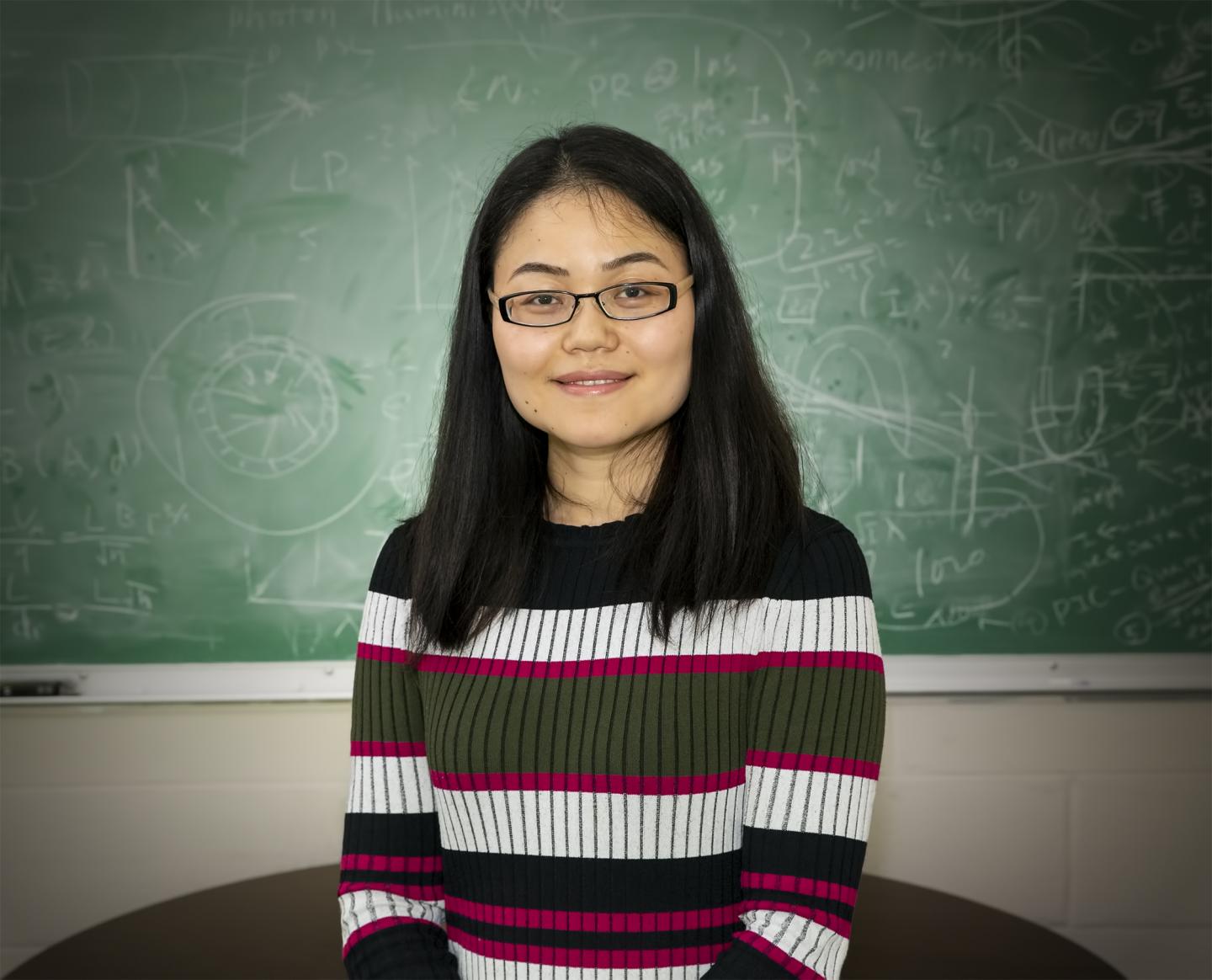
Credit: Elle Starkman
When you peer into the night sky, much of what you see is plasma, a soupy amalgam of ultra-hot atomic particles. Studying plasma in the stars and various forms in outer space requires a telescope, but scientists can recreate it in the laboratory to examine it more closely.
Now, a team of scientists led by physicists Lan Gao of the U.S. Department of Energy’s (DOE) Princeton Plasma Physics Laboratory (PPPL) and Edison Liang of Rice University, has for the first time created a particular form of coherent and magnetized plasma jet that could deepen the understanding of the workings of much larger jets that stream from newborn stars and possibly black holes — stellar objects so massive that they trap light and warp both space and time.
“We are now creating stable, supersonic, and strongly magnetized plasma jets in a laboratory that might allow us to study astrophysical objects light years away,” said astrophysicist Liang, co-author of the paper reporting the results in the Astrophysical Journal Letters.
The team created the jets using the OMEGA Laser Facility at the University of Rochester’s Laboratory for Laser Energetics (LLE). The researchers aimed 20 of OMEGA’s individual laser beams into a ring-shaped area on a plastic target. Each laser created a tiny puff of plasma; as the puffs expanded, they put pressure on the inner region of the ring. That pressure then squeezed out a plasma jet reaching over four millimeters in length and created a magnetic field that had a strength of over 100 tesla.
“This is the first step in studying plasma jets in a laboratory,” said Gao, who was the primary author of the paper. “I’m excited because we not only created a jet. We also successfully used advanced diagnostics on OMEGA to confirm the jet’s formation and characterize its properties.”
The diagnostic tools, developed with teams from LLE and the Massachusetts Institute of Technology (MIT), measured the jet’s density, temperature, length, how well it stayed together as it grew through space, and the shape of the magnetic field around it. The measurements help scientists determine how the laboratory phenomena compare to jets in outer space. They also provide a baseline that scientists can tinker with to observe how the plasma behaves under different conditions.
“This is groundbreaking research because no other team has successfully launched a supersonic, narrowly beamed jet that carries such a strong magnetic field, extending to significant distances,” said Liang. “This is the first time that scientists have demonstrated that the magnetic field does not just wrap around the jet, but also extends parallel to the jet’s axis,” he said.
The researchers hope to expand their research with larger laser facilities and investigate other types of phenomena. “The next step involves seeing whether an external magnetic field could make the jet longer and more collimated,” Gao said.
“We would also like to replicate the experiment using the National Ignition Facility at Lawrence Livermore National Laboratory, which has 192 laser beams, half of which could be used to create our plasma ring. It would have a larger radius and thus produce a longer jet than that produced using OMEGA. This process would help us figure out under which conditions the plasma jet is strongest.”
###
The team included scientists from PPPL, Rice, LLE, MIT, and the University of Chicago. The research was supported by the DOE’s National Nuclear Security Administration, the National Science Foundation, and Los Alamos National Laboratory. Computer simulations were performed on the Extreme Science and Engineering Discovery Environment (XSEDE), a collaborative partnership of 19 institutions, and the Argonne Leadership Computing Facility, a DOE Office of Science user facility.
PPPL, on Princeton University’s Forrestal Campus in Plainsboro, N.J., is devoted to creating new knowledge about the physics of plasmas — ultra-hot, charged gases — and to developing practical solutions for the creation of fusion energy. The Laboratory is managed by the University for the U.S. Department of Energy’s Office of Science, which is the single largest supporter of basic research in the physical sciences in the United States and is working to address some of the most pressing challenges of our time. For more information, visit https:/
Media Contact
Raphael Rosen
[email protected]
Original Source
https:/
Related Journal Article
http://dx.




